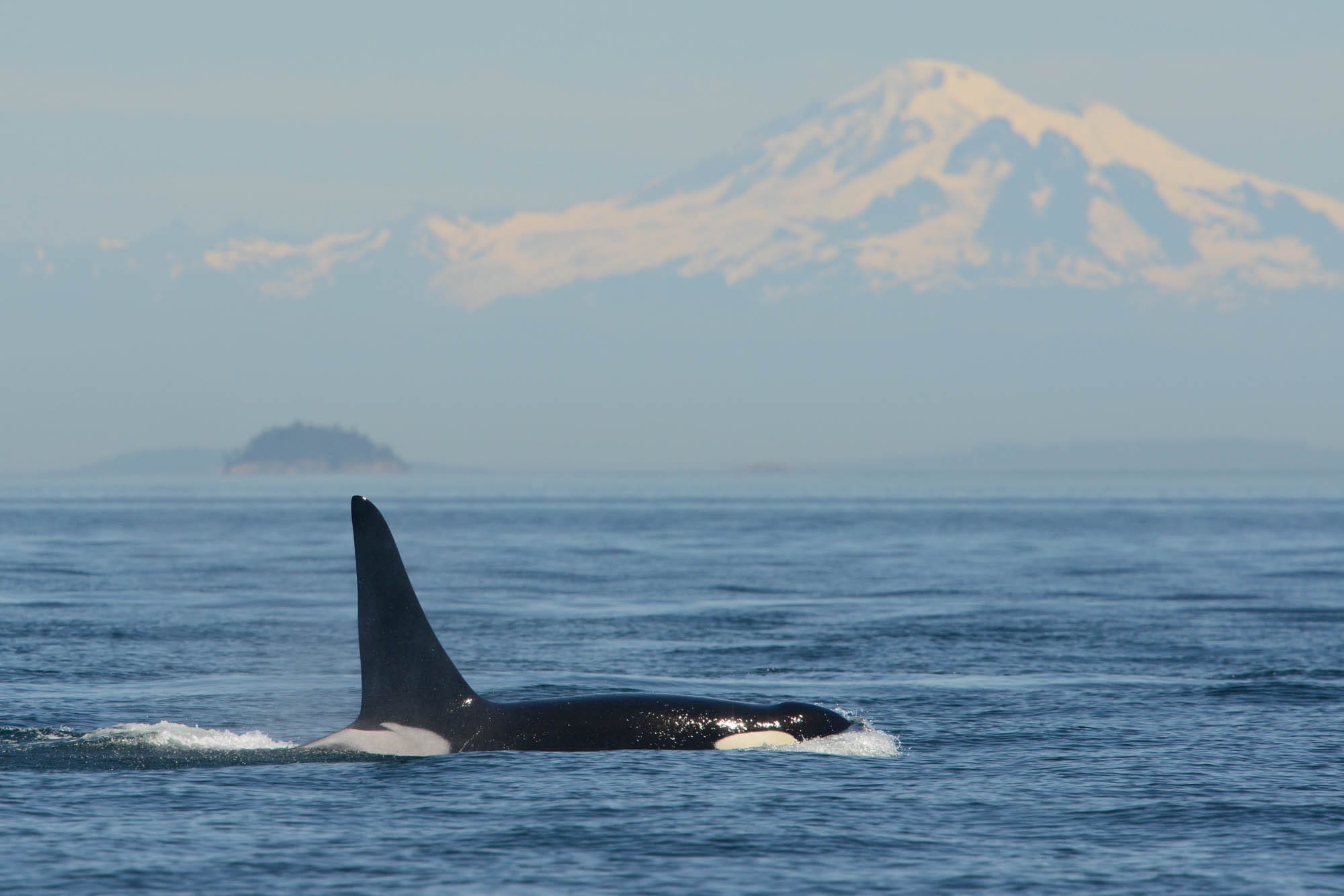
Modernization
Learn more about government’s intention to modernize the museum to protect our historic holdings and provide better access to our collections.

In 2018, it broke our collective hearts to watch Tahlequah, aka Southern Resident orca J35, carry her stillborn calf at the surface of the sea for more than two weeks. Earlier this month, she once again gave birth, and at the time of this writing, her baby, J57, is swimming strongly by her side.
Following is an excerpt from biologist Misty MacDuffee’s essay, “A Bond Through Salmon, Language and Grandmothers” in the best-selling book Spirits of the Coast: Orcas in Science, Art and History. This beautiful companion publication to next spring’s feature exhibition, Orcas: Our Shared Future, features art, essays and poetry from diverse authors and artists, and dives deep into the magic, myths and ecology of orcas.

In July of 2018, a young mother from J pod named Tahlequah (J35) was ready to give birth. Her immediate family included her eight-year-old son, her mother, two siblings and a niece. On July 18, Tahlequah gave birth to a female calf, but by the time observers from the Center for Whale Research arrived on site, the calf was dead. Tahlequah was repeatedly bringing the small neonate to the surface and taking long dives to retrieve it when it fell from where it was balanced on the rostrum section of her head. She continued to carry her calf for 17 days.
Loss is something Southern Resident killer whales know well. Tahlequah, for example, had lost her sister two years earlier, in 2016, and her nephew shortly after that. Before this, she would have witnessed her sister lose a calf in early 2013. This was also not Tahlequah’s first lost calf. There was one, and likely two, before this loss.
In his book Beyond Words, Dr. Carl Safina explores the tight bonds that lead to grief and emotion in animals, a topic that academics like Drs. Marc Bekoff and Barbara King have observed and documented for some time. King defines grief as a situation where surviving individuals who knew the deceased alter their behavioural routine. Regardless of the science, the inability of this mother to let go of her calf triggered a groundswell of emotion around the world, including in parents who recognize grief over a child. A remarkable documentation of these sentiments lives in a story and podcast by Seattle Times journalist Lynda Mapes.
Ensuring the survival of these whales in the Salish Sea isn’t about managing the ocean, it’s about managing humans. For a Resident killer whale, survival depends on the ability to hear and be heard far more than the ability to see. They now need us not just to see their plight and empathize, but to listen, and to act. Science does offer hope, indicating that we can put these whales on a trajectory toward recovery. Given this truth, we would all do well to reflect on our own ability to take responsibility for what is evident before us, as we also share a bond to this place, these salmon and these killer whales.
As night fell on that summer day in 2018 when Tahlequah gave birth to her fated calf, she and members of her matriline approached Eagle Cove on the southwest side of San Juan Island. An island resident reported what they had witnessed that evening to the Center for Whale Research. It read as follows:
“At sunset, a group of 5–6 females gathered at the mouth of the cove in a close, tight-knit circle, staying at the surface in a harmonious circular motion for nearly two hours. As the light dimmed, I was able to watch them continue what seemed to be a ritual or ceremony. They stayed directly centered in the moonbeam, even as it moved. The lighting was too dim to see if the baby was still being kept afloat. It was both sad and special to witness this behaviour. My heart goes out to J35 and her beautiful baby; bless its soul.”
Read the full essay in Spirits of the Coast: Orcas in Science, Art and History, $29.95 at bookstores and online retailers.